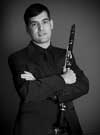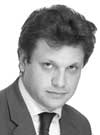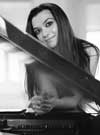Enregistrements

Masterclasses

Bruce Macfarlane, the author of Intellectual Leadership in Higher Education, describes ‘professor’ as ‘a slippery term’. That’s because in the UK it means something quite different from what it denotes in North America. In North America ‘professor’ and ‘professorship’ are generic labels applied to all academics employed to research and teach in universities. In the UK, much of Europe (and, for the most part, in Australasia and South Africa), ‘professorship’ denotes distinction: a professor is someone who has been promoted to the highest academic grade – usually on the basis of her or his scholarly achievements. It’s the equivalent to what, in North America, is known as full professorship.
Some people are unclear about how someone known as ‘Dr’ is different from someone whose title is ‘Professor’. ‘Dr’ denotes someone who has studied for, and been awarded, a PhD, so it denotes an academic qualification: the holder of the highest university degree. It’s the equivalent of writing ‘PhD’ after someone’s name. Most professors will be PhD-holders, but so will be many – if not most – other academics employed as university teachers and researchers. ‘Professor’ doesn’t denote a qualification but an academic staff grade – the most senior one. So, in the UK, an academic whose title is ‘Dr’ is someone who’s got a PhD, but hasn’t been promoted to the highest academic grade, while an academic whose title is ‘Professor’ is someone who probably (but not necessarily) has a PhD, but who has been promoted to the highest grade on the university pay scale. Professorship therefore denotes seniority and status. If we make a comparison with medical doctors working in a hospital, all will have medical degrees, but they are employed at different levels of seniority, with consultants being the most senior doctors. We may think of professors as the equivalent of hospital consultants.
On this website the UK interpretation of ‘professor’, ‘professorship’ and the ‘professoriate’ apply.
Aron Rozsa

PIANO - Susanna Artzt
9 - 13 March 2015 
| Participation fee: | € 690.- (active) |
| € 290.- (passive) | |
| Number of lessons | 4 |
| Final Concert: | 13 March. 19h00 |
| Wiener Musikakademie |
«SUSANNA ARTZT’s tone colours are second to none. … an immaculate performance in which the sheer beauty of tone, superbly captured in this recording, leads one to hang onto every note this pianist plays. A thought-provoking recital by a magnificent pianist. » PAUL LANFEAR, Piano Journal, England"Cultured touch is the magic word, with which Susanna Artzt’s play can be characterized. At the same time she accentuates with fascinating tension, so that these well known pieces sound in a fascinating novelty." (Piano News)
The Austrian pianist comes from a multicultural family with mainly Indian roots. Susanna Artzt showed a special musical talent since her earliest childhood.
At the age of 15 she was the youngest student when she was accepted in the class of Vladimir Krpan at the Zagreb Music Academy.
At 16 she was discovered by Paul Badura-Skoda, who described her as an „exceptional piano talent“ and immediately invited her to attend his class in Vienna at the University of Music. She completed her piano studies there as a Magistra artium with Michael Krist and achieved perfection during her post-graduate studies with Peter Efler. She also worked together with Jacob Lateiner, Murray Perahia, Rudolf Kehrer and Evgenij Timakin in the course of many master classes. During her study period Susanna Artzt was several times a prize winner in international piano competitions.
Both of her CDs have brought her high critical acclaim internationally and Piano News in Germany named her debut CD „CD of the months“.Recitals followed at the Vienna Musikverein, at the „KlangBogen Wien“ festival, at the „Biennale Zagreb - World Music Days“, the „Heidelberger Frühling“ festival, the „International Chopin Festival in Gaming“, the „Contemporary Music Week“ in Bucharest, live concerts with the Westdeutscher Rundfunk in Cologne and at the International Schönberg Centre in Vienna, numerous piano concertos with orchestras, and radio- and television recordings for the ORF, WDR, RAI and HRT, among others.
One of the highpoints of her career to date is undoubtedly the concert with Zubin Mehta, which took place on invitation of the maestro in Munich, and in which she celebrated a sensational success with the Second Piano Concerto by Saint -Saens. Only a few months later she played for the first time in New York, where she gave the first american performance of the Two Waltz-Impromptus op. 9 by Franz Schreker.
While her lively solo concert activities are at the core of her artistic life, Susanna Artzt also undertakes chamber-music encounters with popular partners, such as the cellist Othmar Müller (Artis Quartett) or Tamás Varga, the principal cellist of the Vienna Philharmonic Orchestra. With her husband, the pianist Manfred Wagner-Artzt, she performs since 1998 successfully as the „Arsio Piano Duo“. She also has worked together with actors like Karl Markovics, Dorothee Hartinger, Michael König, etc.
Susanna Artzt's wide-ranging repertoire includes works trom the Baroque to the contemporary modern, whereby she gives special attention to Mozart. Schubert and Chopin as well as the French and Russian modernist fore-runners.